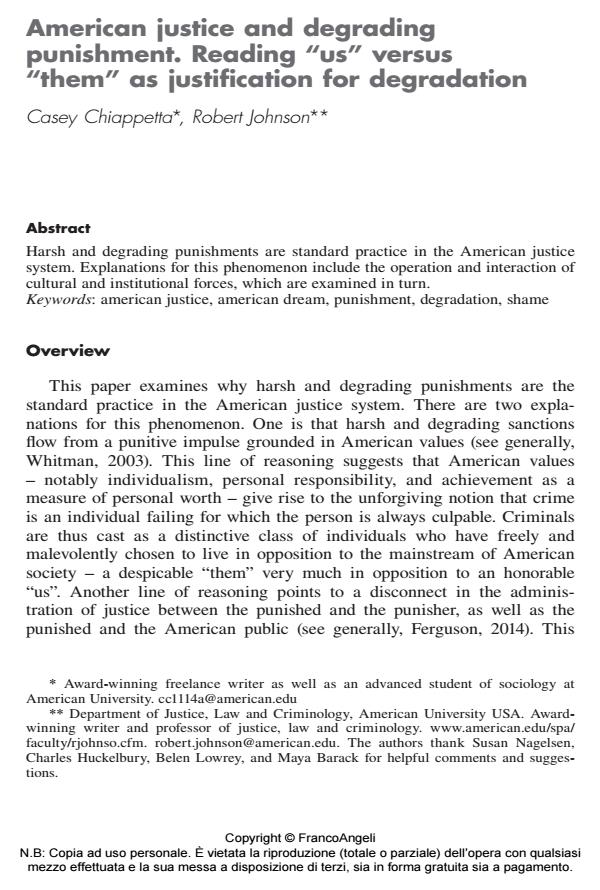American justice and degrading punishment. Reading "us" versus "them" as justification for degradation
Titolo Rivista SICUREZZA E SCIENZE SOCIALI
Autori/Curatori Casey Chiappetta, Robert Johnson
Anno di pubblicazione 2015 Fascicolo 2015/2
Lingua Inglese Numero pagine 14 P. 35-48 Dimensione file 102 KB
DOI 10.3280/SISS2015-002004
Il DOI è il codice a barre della proprietà intellettuale: per saperne di più
clicca qui
Qui sotto puoi vedere in anteprima la prima pagina di questo articolo.
Se questo articolo ti interessa, lo puoi acquistare (e scaricare in formato pdf) seguendo le facili indicazioni per acquistare il download credit. Acquista Download Credits per scaricare questo Articolo in formato PDF

FrancoAngeli è membro della Publishers International Linking Association, Inc (PILA)associazione indipendente e non profit per facilitare (attraverso i servizi tecnologici implementati da CrossRef.org) l’accesso degli studiosi ai contenuti digitali nelle pubblicazioni professionali e scientifiche
Harsh and degrading punishments are standard practice in the American justice system. Explanations for this phenomenon include the operation and interaction of cultural and institutional forces, which are examined in turn.
Parole chiave:American justice, american dream, punishment, degradation, shame
Casey Chiappetta, Robert Johnson, American justice and degrading punishment. Reading "us" versus "them" as justification for degradation in "SICUREZZA E SCIENZE SOCIALI" 2/2015, pp 35-48, DOI: 10.3280/SISS2015-002004